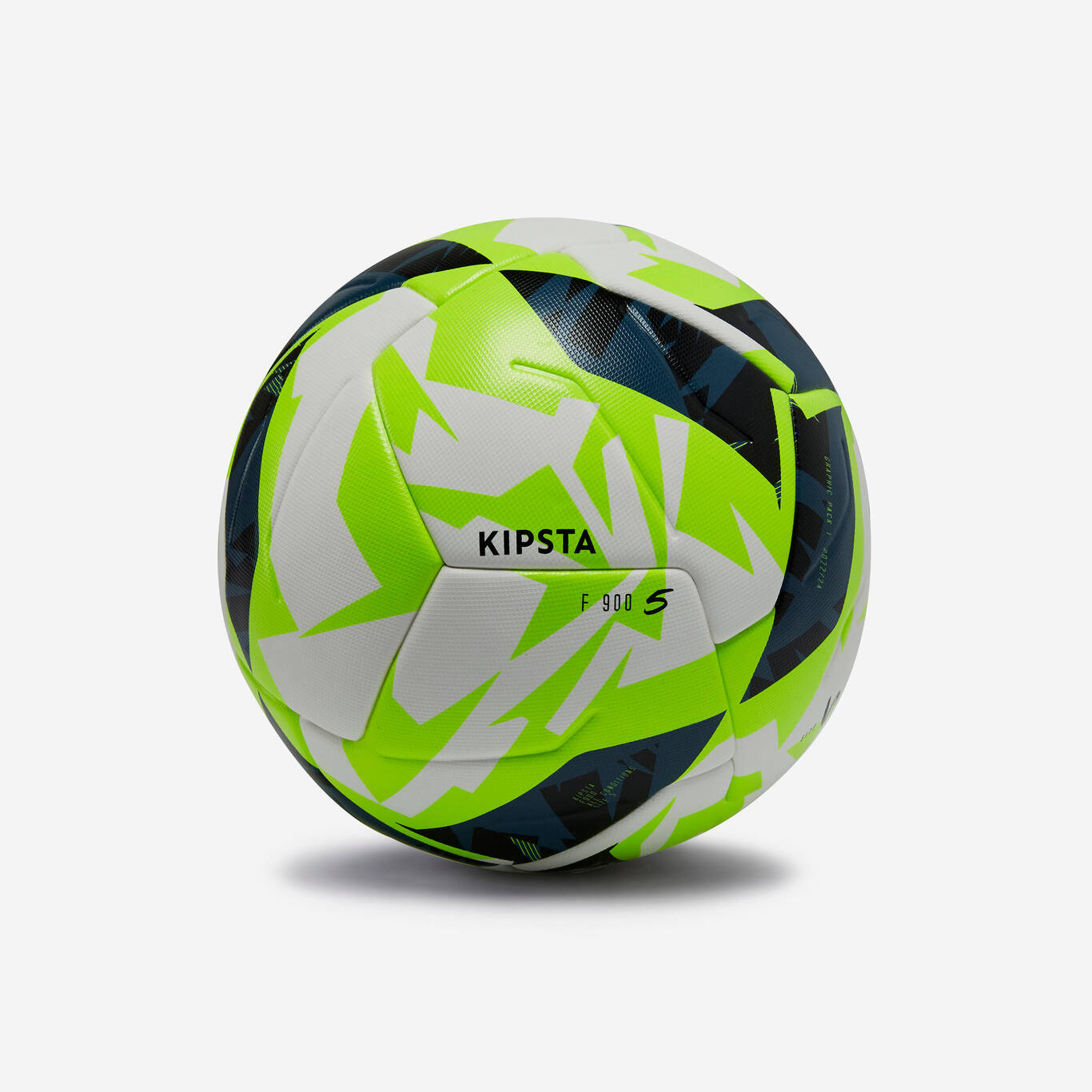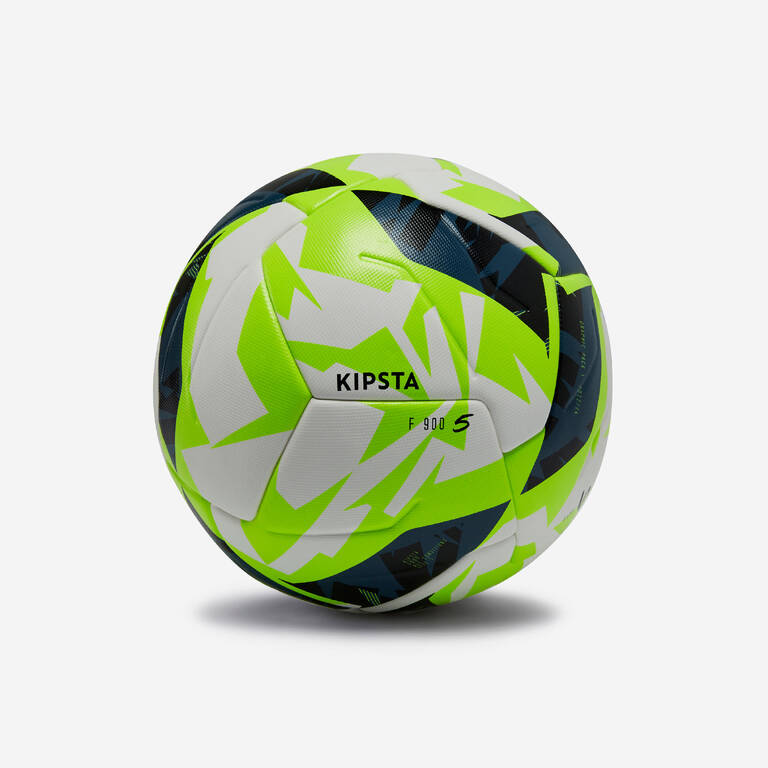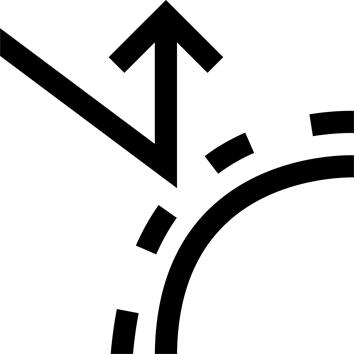The story behind this ball
For this FIFA Quality Pro football, our designers have used thermobonding technology (seamless) to guarantee perfect sphericity and more precise shots. In addition, this technology ensures better waterproofing while training in the rain. Lastly, to make the ball as round as possible, we've chosen a laminated bladder (there's a band of fabric glued to the bladder).
A beach ball?
We know that a stable trajectory is important, especially for field players kicking long balls and for goalkeepers sending the ball down the pitch. Traditionally designed using 32 panels, we've designed the F900 using 12 identical panels. These 12 panels are also thermobonded and have special grooves in them. This significantly improves the ball's stability and makes it more enjoyable to play with.
Exclusive to Kipsta
We know that, in matches, the little details make all the difference. For this F900 ball, we wanted to really focus on having a stable trajectory so that players and keepers could better read the ball in the air. To do that, we tested different panel patterns for the outside and went with the one that achieved the best results. This 12-panel design combined with the embossed lines is exclusive to Kipsta.
Did you say FIFA Quality Pro?
We have conducted numerous lab tests on the ball in order to provide the excellent accuracy that football players require while competing. Each test is outlined below.
Too light? Too heavy? The weight is standardised...
This ball weighs between 420 g and 445 g (size 5) and complies with official FIFA standards.
FIFA Quality Pro ball.
How big is it? What's the circumference?
This ball measures between 68.5 cm and 69.5 cm (size 5) and complies with official FIFA standards.
FIFA Quality Pro ball.Between 68.5 and 69.5 cm.
A "round" ball?
Here's how we test sphericity:
Average measured variation: 1.5% max (FIFA Quality Pro standard).
We measure the football's sphericity at 4500 different points and then examine any differences.
When the discrepancy is greater than 1.5% (FIFA Quality PRO Standard), our engineers are tasked with improving the sphericity to ensure consistent rebound.
Maximum pressure loss test: here's what we do...
Here's how we test pressure loss: We inflate the ball to the recommended pressure (meaning 0.8 bar).
72 hours later, the ball must not have lost more than 15% of its pressure, meaning approx. 0.1 bar (FIFA QUALITY PRO certification). The pressure after 72 hours must, therefore, be at approx. 0.7 bar.
This also means that it is quite normal for a ball to lose pressure after a few days.
We've also tested how much water the ball absorbs...
Here's how we test water absorption:
We simulate rainy playing conditions in a lab, leaving the ball to sit in 2 cm of water on a pivoting support whilst subjecting it to 250 compressions.
At the end of the test, the ball must have absorbed no more than 10% of its weight (FIFA Quality Pro standard). This is one of the advantages of the thermobonded process; water absorption is limited in comparison to other processes (machine-stitched for example)
It's all about the bounce
Here's the bounce test:
The ball is dropped onto a steel plate 10 times from a height of 2 metres.
The bounce height must be between 135 and 155 cm with a maximum difference of 10 cm between the ball's highest and lowest bounce.
Not even a scratch!
The most stringent test we put this ball through is the shooting machine test.
The ball must resist up to 2500 shots against an inclined flat concrete slab at 50 km/h at a distance of 2.5 m.
At the end of the test, we check:
- the ball's general state: stitching must withstand this test
- the circumference: must not have increased by more than 1.0 cm.
- the sphericity: it must not have varied by over 1.5%
- the pressure: loss of pressure must not exceed 10.0%.
How about you? What do you think?
We value your feedback and use it to continuously improve our products.A huge thank you in advance for sharing your feedback with us.































